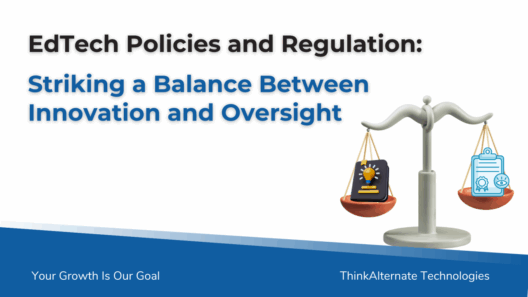In today’s rapidly advancing world, the importance of energy conservation in commercial buildings cannot be overstated. These structures, which encompass office complexes, shopping malls, and manufacturing facilities, often represent significant portions of urban energy consumption. The quest for energy efficiency is not only a pathway to reducing operational costs but also a vital strategy to mitigate the burgeoning impacts of climate change. Let us delve into a myriad of strategies commercial buildings can adopt to conserve energy and, consequently, cut costs.
1. Energy Audits: The Foundation of Efficiency
The journey towards energy conservation begins with a comprehensive energy audit. This assessment involves scrutinizing energy flows within the building to identify areas of inefficiency. By utilizing advanced diagnostic tools, building managers can detect anomalies that lead to energy wastage, such as air leaks, poorly insulated walls, and outdated HVAC systems. Furthermore, engaging energy specialists can facilitate the integration of innovative technologies, ensuring that expenditures on building systems yield optimal performance. This preliminary step not only unveils potential savings but also fosters a culture of sustainability.
2. Intelligent Building Management Systems
Commercial buildings can significantly advance efficiency by implementing intelligent building management systems (IBMS). These sophisticated frameworks utilize software and sensors to monitor and control a building’s environmental conditions. For instance, automated lighting systems can adjust brightness based on occupancy and natural light availability. Furthermore, the integration of smart thermostats allows for real-time energy management, enabling the heating, ventilation, and air conditioning (HVAC) systems to operate more efficiently. The amalgamation of these technologies culminates in substantial energy reductions and cost savings.
3. Renewable Energy Sources
Integrating renewable energy sources is a pivotal strategy in the quest for sustainability. Solar panels, wind turbines, and geothermal systems have become increasingly viable options for commercial edifices. By harnessing these renewable resources, businesses can reduce their reliance on fossil fuels, which often leads to decreased energy costs. Additionally, local incentives and incentives from government or utilities can help offset initial installation costs, making renewables not just an environmentally sound choice but a fiscally prudent one. Moreover, the implementation of on-site generation can insulate businesses from fluctuations in energy prices.
4. Energy-Efficient Lighting
Lighting accounts for a substantial portion of energy consumption in commercial buildings. Transitioning to energy-efficient lighting solutions, such as LED fixtures, can drastically reduce electricity usage. Unlike incandescent bulbs, LEDs consume a fraction of the power and have a longer lifespan, thereby diminishing the frequency of replacements and associated labor costs. Additionally, incorporating daylighting strategies, which leverage natural sunlight, can further curtail reliance on artificial lighting. Strategic placement of windows and skylights can enhance the aesthetic of a workspace while promoting energy savings.
5. Insulation and Building Envelope Improvements
A building’s envelope serves as its first line of defense against the external environment. Enhancing insulation, sealing air leaks, and optimizing window efficiency can dramatically affect energy consumption. Inadequately insulated buildings can experience substantial heat loss in winter and excessive heat gain in summer, leading to increased heating and cooling demands. The use of high-performance insulation materials, energy-efficient windows, and weather stripping can ameliorate these issues, resulting in lower energy bills and increased occupant comfort.
6. Efficient Water Management
Water efficiency also plays a critical role in energy conservation. Implementing water-saving fixtures, such as low-flow faucets and dual-flush toilets, can reduce water consumption and the energy required for heating water. Additionally, capturing rainwater and utilizing greywater systems can promote sustainable water use, alleviating stress on municipal systems while lessening utility costs. Regular maintenance of plumbing systems can identify leaks and inefficiencies, further contributing to cost reductions.
7. Employee Engagement and Behavioral Changes
Cultivating a culture of sustainability within the workplace can empower employees to actively engage in energy conservation efforts. Training sessions can educate personnel on best practices, such as turning off lights and unplugging devices when not in use. Encouraging the use of natural ventilation instead of air conditioning during milder weather can also contribute to energy savings. By fostering awareness and responsibility, organizations can tap into the collective effort of their workforce, amplifying the impact of individual actions on overall energy conservation.
8. Financial Analysis and Incentives
Investing in energy efficiency requires a comprehensive understanding of financial implications. Conducting a cost-benefit analysis of energy-saving measures can illuminate the most advantageous strategies for specific buildings. Furthermore, many jurisdictions offer financial incentives, such as rebates or tax credits, for implementing energy-efficient technologies. Engaging financial consultants who specialize in energy efficiency can assist in navigating these incentives, ensuring that the financial burdens of upgrading systems are mitigated.
9. Real-Time Monitoring and Feedback
Real-time energy monitoring empowers managers to identify inefficiencies as they occur, rather than post-factum. The use of smart meters and energy dashboards provides instant feedback on consumption patterns, allowing for immediate corrective actions. This proactive approach not only facilitates swift adjustments but also aids in cultivating a comprehensive understanding of energy usage, informing future strategies and facilitating ongoing improvements.
Conclusion
Commercial buildings have a profound responsibility to adopt energy conservation strategies, not solely for the sake of economic benefit but for the broader goal of environmental sustainability. Through a multifaceted approach encompassing energy audits, advanced technologies, renewable energy integration, employee engagement, and financial analysis, these structures can lead the way in creating a more sustainable future. The necessity for action is urgent; the time is now for commercial real estate to recognize its pivotal role in addressing climate change while simultaneously safeguarding its financial health.







